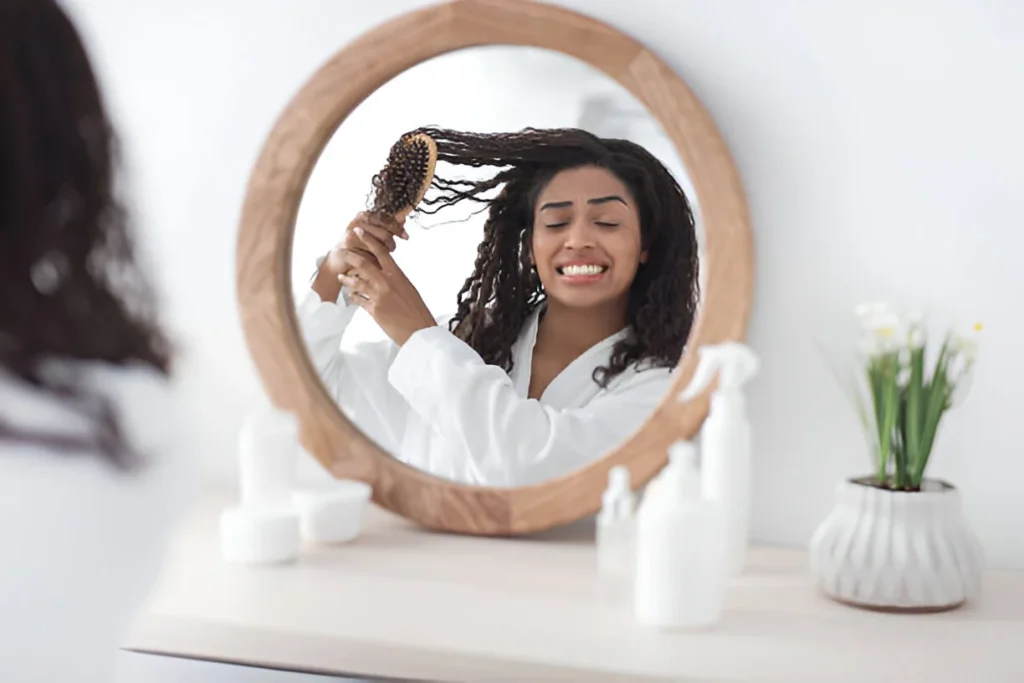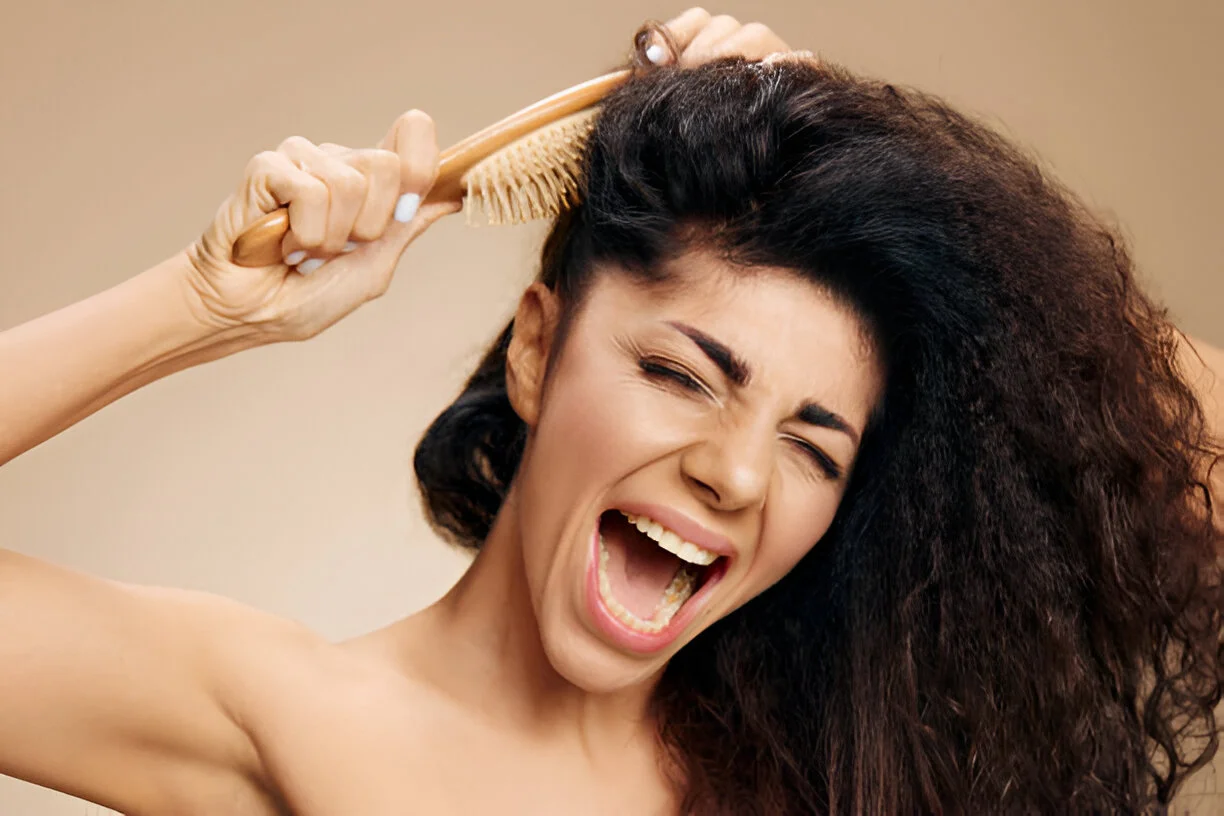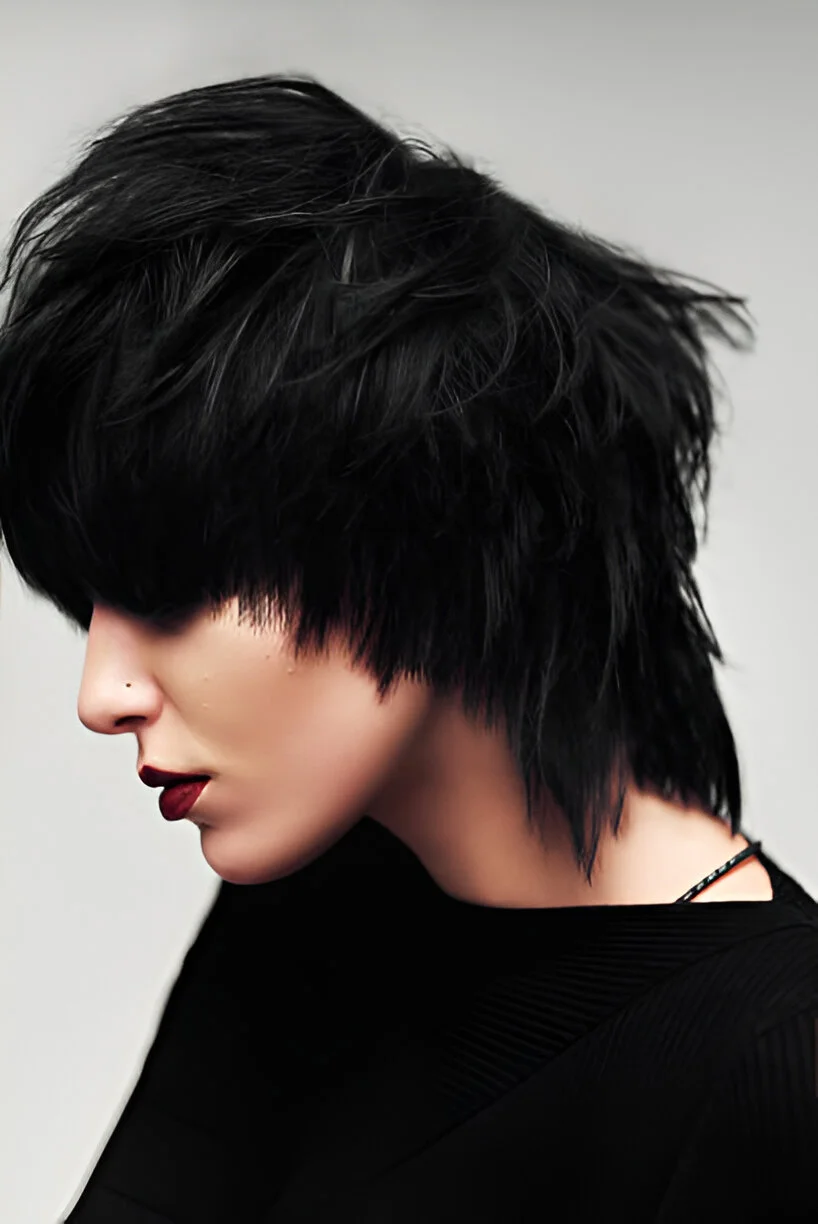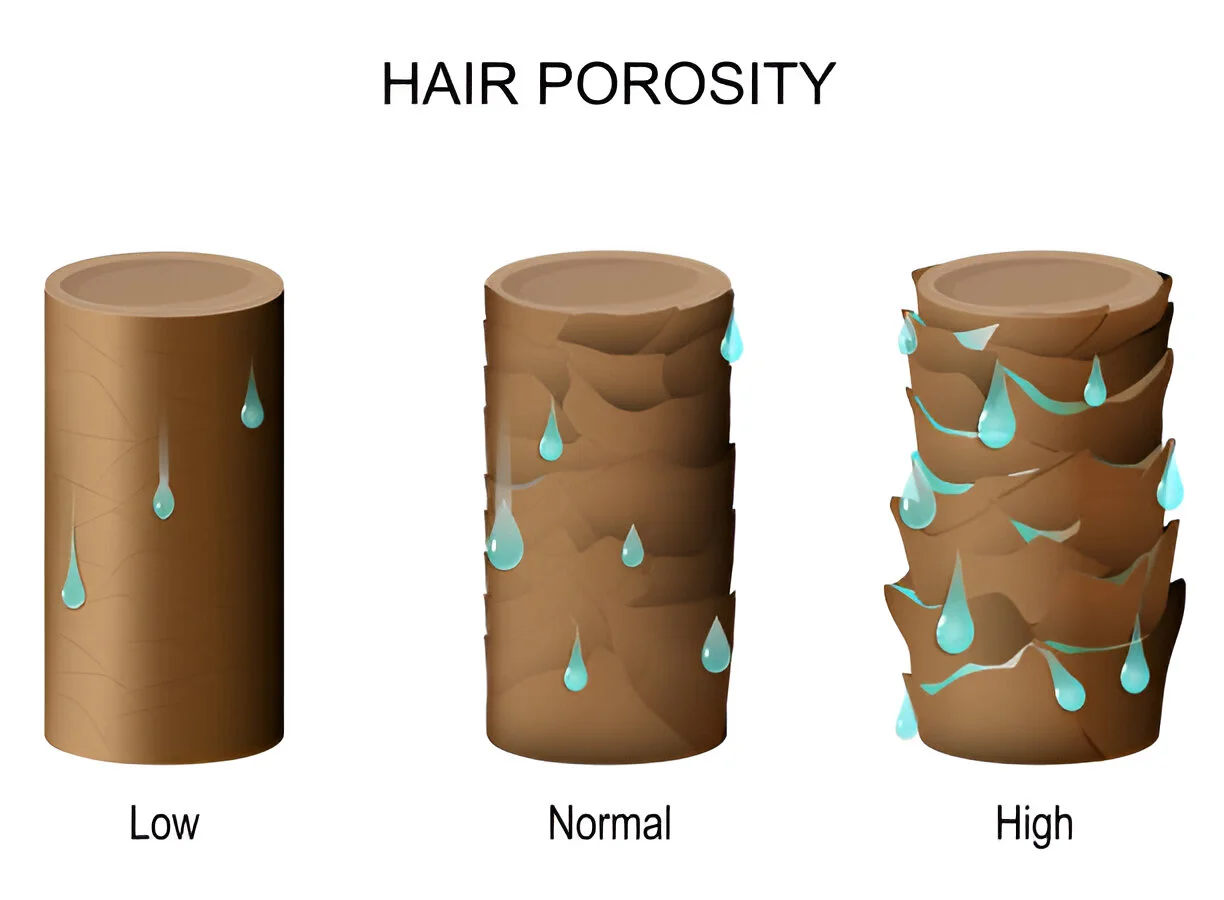Introduction:
You run your fingers through your hair when suddenly, they snag on what feels like an impossible knot. As you reach for your brush, you’re filled with dread, knowing the painful battle that awaits. That tangled mess of matted hair didn’t appear overnight, though it certainly feels that way. The frustration of dealing with severely tangled locks can leave even the most patient person ready to reach for scissors.
But before you make any drastic decisions, understanding why your hair keeps matting might be the key to finally breaking free from this painful cycle. Matted hair isn’t just a cosmetic inconvenience – it’s often a symptom of underlying issues that, once addressed, can transform your entire hair care experience. The surprising causes behind your matted hair woes might not be what you think, and the solutions could be simpler than you ever imagined.
Whether you’re struggling with your own tangled tresses or helping a child through the tearful detangling process, this comprehensive guide will reveal the unexpected culprits behind matted hair and provide practical strategies to conquer the problem once and for all.
What Exactly Is Matted Hair?
Before diving into causes, let’s clarify what matted hair actually is. Unlike occasional tangles or knots that form during a windy day, matted hair represents an extreme condition where multiple strands become severely entangled, forming dense, compressed clumps that resist ordinary brushing attempts.
Matted hair occurs when numerous strands wrap around each other, creating a tight network that becomes increasingly difficult to separate. These mats often form close to the scalp, particularly at the nape of the neck or hidden underneath layers of hair. The longer matted hair remains untreated, the more compressed and challenging it becomes to resolve.
The distinguishing characteristics of matted hair include:
- Tight, compressed knots that don’t respond to normal brushing
- A felt-like texture where individual strands are no longer distinguishable
- Resistance to regular detangling methods
- Progressive worsening if left unaddressed
- Potential for discomfort, scalp pain, or even hair loss during removal attempts
How Matted Hair Differs from Normal Tangles
While regular tangles typically involve a handful of strands crossing paths temporarily, matted hair represents a more serious condition. Standard tangles usually respond well to conditioner and gentle combing, but matted hair creates complex, multi-layered knots that can require specialized techniques or products to resolve safely.
Matted hair also tends to accumulate debris, oils, and product residue within its tight structure, creating an increasingly difficult problem that compounds over time. Understanding this distinction helps explain why your usual detangling methods might fail when confronting true matting issues.
Cause #1: Neglected Nighttime Hair Care Routines
That beautiful silk pillowcase isn’t just a luxury purchase – it might be the key to preventing your matted hair nightmare. One of the most unexpected causes of severe tangling happens while you sleep, completely beyond your conscious awareness.
When you toss and turn throughout the night (and most people do), your hair continuously rubs against traditional cotton pillowcases. This creates substantial friction that gradually tangles strands into increasingly complex knots. The eight hours you spend sleeping provide ample time for matting to develop, especially if you have fine, curly, or long hair types that are particularly prone to tangling.
The cumulative effect of night after night of this friction can transform healthy hair into a matted mess, often concentrated at the back of the head where pressure against the pillow is greatest.
The Solution: Protective Nighttime Practices

Incorporating these strategic changes to your bedtime routine can dramatically reduce morning matting:
- Switch to silk or satin pillowcases to minimize friction
- Loosely braid long hair before sleeping (tight braids can cause different problems)
- Consider a silk or satin bonnet, especially for curly or textured hair
- Before bed, apply a small amount of leave-in conditioner to the ends of your hair.
- Use a scrunchie rather than elastic bands if securing hair at night
- Detangle thoroughly before sleeping to prevent existing tangles from worsening
Many people discover that addressing their nighttime hair care routine alone significantly reduces their struggle with matted hair issues.
Cause #2: Product Buildup You Can’t See
That impressive arsenal of styling products lining your bathroom shelf might be secretly contributing to your matted hair problems. Hair products, particularly those containing silicones, waxes, or heavy oils, don’t simply wash away with each shampoo. Instead, they gradually accumulate on the hair shaft, creating a tacky surface that encourages strands to stick together.
This invisible buildup makes your hair more prone to tangling and matting by increasing friction between strands. Even products marketed as “lightweight” can contribute to buildup over time, especially if you’re not using clarifying treatments regularly.
Signs Your Hair Is Suffering from Product Buildup
You may be experiencing product buildup in your hair if you notice the following:
- A heavy, weighed-down feeling even after washing
- Difficulty achieving volume at the roots
- A dull appearance despite regular conditioning
- Increased tangling and resistance to brushing
- Scalp itchiness or flakiness that resembles dandruff
- Hair that feels sticky or tacky when wet
This buildup creates the perfect environment for matted hair to form, as the sticky residue causes strands to catch on each other rather than gliding smoothly past one another.
Breaking the Buildup Cycle
To combat product buildup effectively:
- Add a clarifying shampoo to your hair care routine once every one to two weeks
- Consider occasional apple cider vinegar rinses to dissolve residue (dilute 1 tablespoon in 1 cup of water)
- Examine your product lineup and eliminate those with heavy silicones or petroleum derivatives
- When applying products, focus on the mid-lengths and ends of your hair, and avoid applying them to the scalp.
- Double-cleanse when washing hair, especially if you use numerous styling products
Remember that clarifying treatments should always be followed by deep conditioning to restore moisture balance, as clarifying can temporarily strip natural oils alongside product residue.
Cause #3: Untreated Medical Conditions
Sometimes, persistent matted hair signals something happening beneath the surface. Various health conditions can dramatically alter your hair’s texture and increase its tendency to mat, often before other symptoms become obvious.
Thyroid imbalances frequently manifest as changes in hair texture, with hypothyroidism particularly linked to dry, brittle hair that tangles easily. Hormonal fluctuations during pregnancy, menopause, or due to polycystic ovary syndrome can similarly affect hair’s structural integrity, making it more prone to matting.
Nutritional deficiencies represent another hidden culprit. Your hair requires adequate protein, iron, biotin, zinc, and various vitamins to maintain its strength and natural smoothness. When these nutrients are lacking, hair becomes more fragile and susceptible to tangling severely.
Certain autoimmune conditions affecting the scalp can also trigger changes in hair texture long before they’re formally diagnosed. These include conditions like psoriasis, seborrheic dermatitis, or folliculitis, which affect the scalp environment and subsequently hair health.
When to Consult a Healthcare Provider
If you notice these warning signs alongside your matted hair issues, consider speaking with a healthcare professional:
- Sudden changes in hair texture that persist despite improved care routines
- Unusual hair loss accompanying the matting problems
- Scalp pain, sensitivity, or visible changes in scalp appearance
- Matting that resists all reasonable intervention methods
- Other symptoms like fatigue, weight changes, or skin problems
Your matted hair might be your body’s early warning system for addressing underlying health concerns that require medical attention.
Cause #4: Your Water Quality Is the Culprit
The invisible minerals flowing through your shower head might be secretly sabotaging your hair. Hard water, containing high concentrations of calcium, magnesium, and sometimes iron, can wreak havoc on your locks by creating a mineral film that roughens the hair cuticle.
This roughened surface dramatically increases friction between strands, setting the perfect stage for matted hair to develop. The mineral buildup can also interfere with proper product performance, preventing shampoos and conditioners from working effectively.
Hard water affects approximately 85% of American households to some degree, yet many people never make the connection between their water quality and their hair troubles. The minerals in hard water can also react with hair products, creating a sticky residue that further compounds tangling issues.
Testing for Hard Water
To determine if hard water contributes to your matted hair struggles:
- Check for white, chalky buildup on shower heads, faucets, and inside tea kettles
- Notice if soap doesn’t lather easily in your shower
- Observe if your hair feels unusually stiff or strawlike after washing
- Pay attention to how quickly color-treated hair fades
- Consider using simple water hardness test strips available at hardware stores
Even moderately hard water can significantly impact hair texture over time, gradually increasing its susceptibility to matting.
Hard Water Solutions for Healthier Hair
If hard water is affecting your hair:
- Install an affordable shower filter specifically designed for hair care
- Use chelating shampoos that are specifically designed to remove mineral deposits. Look for ingredients such as EDTA.
- Perform occasional apple cider vinegar rinses to dissolve buildup
- Consider a whole-house water softening system for severe cases
- Use leave-in products containing ingredients that seal the cuticle against mineral damage
Many people report dramatic improvements in hair manageability after addressing water quality issues, often expressing surprise at how significant the impact was.
Cause #5: Your Brushing Technique Is All Wrong
That quick, hurried brush-through might be creating more problems than it solves. Improper brushing techniques rank among the most common yet overlooked causes of matted hair. Many of us learn brushing habits from watching others or through trial and error, often adopting methods that actually create mats rather than preventing them.
Brushing from roots to ends, for instance, pushes tangles downward, compressing them into tighter knots as they travel along the hair shaft. Using the wrong brush type for your specific hair texture can similarly create problems – a fine-toothed comb dragged through thick, curly hair almost guarantees matting.
Brushing hair when it’s soaking wet and at its most vulnerable state can also lead to breakage and tangling, particularly for those with fine or damaged hair. These seemingly minor technique errors compound over time, gradually transforming manageable hair into a matted nightmare.
The Correct Way to Brush for Mat Prevention
Transform your brushing routine with these expert-approved techniques:
- Always begin detangling from the ends, working gradually upward toward the roots
- Section hair completely before beginning the brushing process
- Hold sections firmly near the roots when brushing to reduce scalp pain
- Use appropriate tools: wide-tooth combs for wet hair, detangling brushes for dry hair
- Apply detangling spray before attempting to brush severely tangled hair
- Take your time – rushing through brushing often creates more problems
- For very tangled hair, use your fingers to separate large knots before introducing a brush
Proper brushing technique alone can dramatically reduce matting tendencies, especially when combined with appropriate products for your specific hair type.
Cause #6: Friction From Clothing and Accessories
That cozy winter scarf might be secretly sabotaging your hair. The unexpected rubbing of hair against certain fabrics and accessories creates friction that gradually tangles strands into mats. This problem becomes particularly noticeable during colder months when high-collared clothing, scarves, and hats create constant friction against your hair.
The nape area proves especially vulnerable to this type of matting, as it experiences continuous contact with collars and backs of chairs throughout the day. Similarly, those who wear backpacks, purses with shoulder straps, or regularly use seat belts may notice matting developing precisely where these items contact their hair.
Even your favorite hooded sweatshirt can contribute to the problem, with the hood material creating friction against the back of your hair during normal movement. For those with long hair, sitting back against car seats, office chairs, or couches can also create the perfect conditions for mats to form.
Common Friction Culprits
Be especially mindful of these common friction sources:
- High-necked sweaters and jackets
- Scarves, especially those made from wool or other rough materials
- Backpack straps and shoulder bags
- Seat belts that cross over long hair
- Rough-textured upholstery
- Hooded sweatshirts and jackets
- Hats and beanies, particularly those not lined with silk or satin
Protective Strategies for High-Friction Situations
Implement these practical solutions to minimize friction-based matting:
- Wear hair up in protective styles when using problematic accessories
- Apply leave-in conditioner to the nape area before donning high-collar clothing
- Use silk scarves as barriers between hair and rough fabrics
- Reposition long hair before sitting back against car seats or chairs
- Consider satin-lined hats and hoods for colder weather
- Braid hair before physical activities involving backpacks or sports equipment
- Choose smoother fabric options when possible for items that contact hair
Making these small adjustments can significantly reduce matting issues, particularly for those with hair types already prone to tangling.
Preventing Matted Hair: Your Complete Action Plan
Now that you understand the surprising causes behind your matted hair struggles, implementing a comprehensive prevention strategy will help keep those frustrating tangles at bay. This multi-faceted approach addresses both the immediate symptoms and underlying causes of matting.
Daily Habits
Incorporate these practices into your daily routine:
- Brush thoroughly both morning and night, ensuring you use the correct technique.
- Apply appropriate leave-in conditioners or detangling sprays
- Secure hair before high-movement activities or sleep
- Be mindful of friction sources throughout your day
- Consider protective styling for particularly vulnerable hair
- Hydrate adequately and maintain nutritional balance for hair health
Weekly Maintenance
Supplement daily care with these weekly practices:
- Deep condition to maintain optimal moisture balance
- Check for early signs of matting at the nape and crown
- Use clarifying treatments to remove product buildup
- Assess your product lineup for potential buildup contributors
- Examine your brush and replace if showing signs of damage
Monthly Assessment
Take time monthly to evaluate your overall hair health:
- Track any patterns in when matting tends to occur
- Evaluate whether seasonal changes affect your matting issues
- Consider whether medical check-ups might be warranted
- Assess whether your water filtration needs updating
- Review your product lineup for effectiveness
When to Seek Professional Help
While many matted hair issues respond well to home care, certain situations warrant professional intervention. Consider consulting a professional stylist or trichologist if:
- Hair has become severely matted despite your best efforts
- Matting occurs alongside unusual hair loss or scalp changes
- A child’s hair has developed extreme matting causing emotional distress
- Matting began following illness, medication changes, or medical treatment
- You suspect an underlying medical condition
- Recurring matting persists despite implementing prevention strategies
Professional detangling services can save severely matted hair from being cut, while medical professionals can address any underlying health concerns contributing to the problem.
Conclusion:
The journey to conquering matted hair begins with understanding that those frustrating tangles aren’t simply bad luck – they stem from specific, identifiable causes that you can address systematically. By recognizing these surprising culprits, from your nighttime habits to water quality issues, you’ve taken the first crucial step toward transformation.
Remember that healthy, tangle-free hair isn’t just about aesthetics; it’s about eliminating unnecessary pain, preventing damage, and preserving your hair’s natural beauty. Each small adjustment to your routine creates cumulative benefits that gradually transform your entire hair care experience.
The freedom from constant detangling struggles awaits, bringing with it not just better hair days but also the confidence that comes from understanding and addressing the root causes of your hair challenges. With consistent application of these insights and strategies, you’re now equipped to keep those frustrating mats at bay for good – revealing the manageable, healthy hair that’s been hiding beneath those tangles all along.







